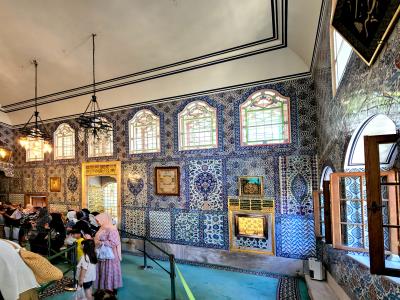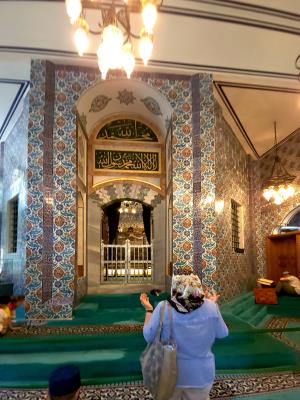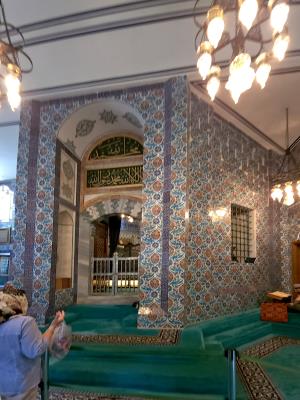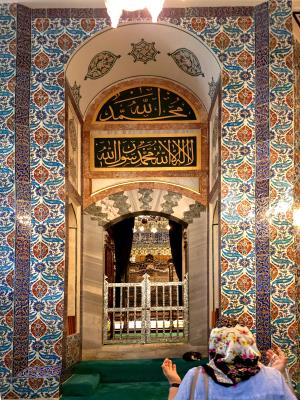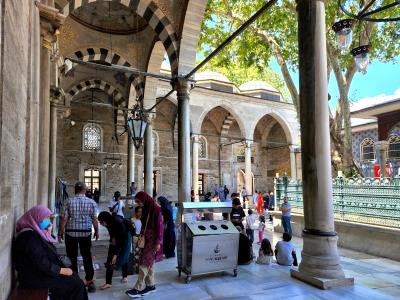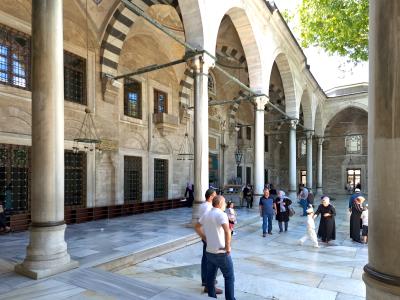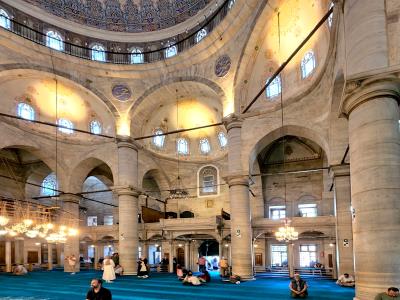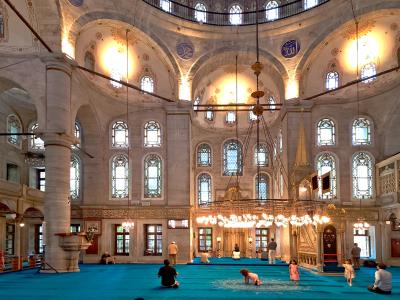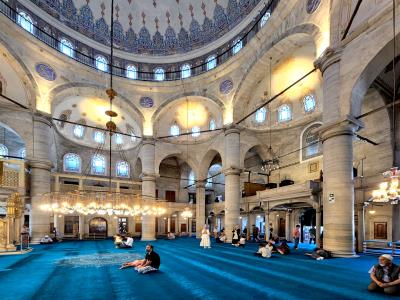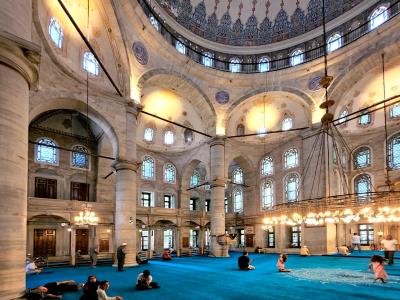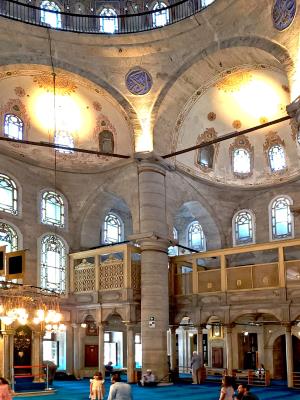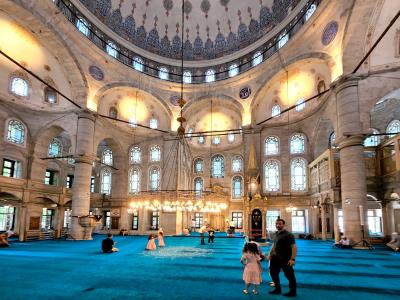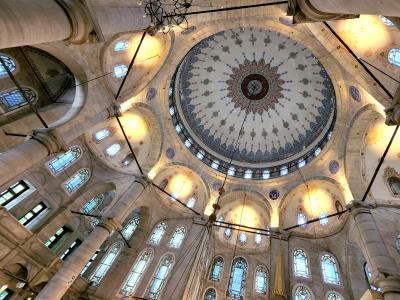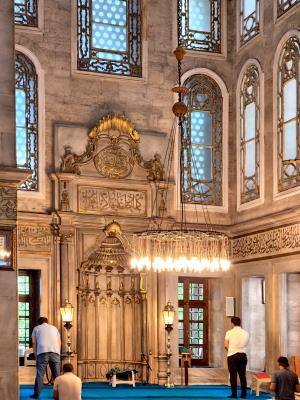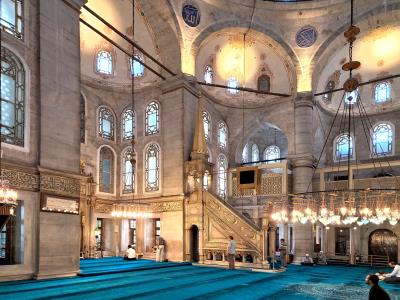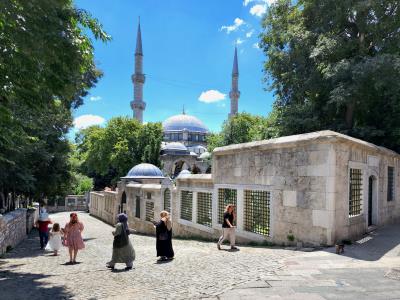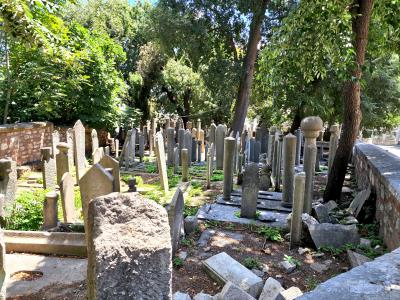Day 8 7/14/22
Istanbul
Frank's Trip
CLICK on any image to enlarge - use mouse cursor to move enlargement it if doesn't fit area
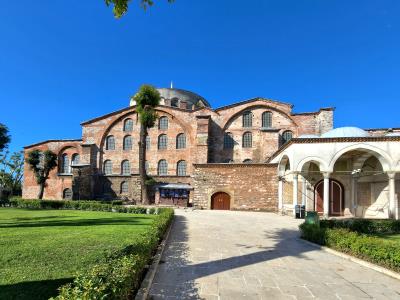
Walking downhill isn't always so easy...
Walking uphill, especially for a distance can be a challenge... ever more so on a steep hill like most of those in Istanbul. The good part is that walking downhill afterward is a breeze. At least, that's what I thought. In Istanbul, especially on this day, I found that walking down a steep hill isn't a picnic, either. When the hill is steep one must constantly hold oneself back a bit. After awhile that becomes, literally, a pain in the butt. The gluteus maximus, medius and minimus really get a workout!
This is my final day of excursions. Tomorrow is for getting everything organized and ready to fly back and getting some rest ahead of a long trip. It's been great and I rather hate to leave... looking forward already to my next vacation, though :-)
Hagia Irene Museum is the only Byzantium church which was never converted to a mosque in Istanbul. The history of the building goes back to the time of Constantine the great, 4th century AD. From the records we know today that the church of Constantine was destroyed in the Nika Revolt in 6th century and a new church was constructed with the order of Justinian the 1st in 6th century AD. Later, Hagia Irene was considered to be the chapel of the patriarchal church, Hagia Sophia. As the building stayed inside of the Topkapı Palace grounds after 15th century, the building was converted to be the security and protection area. This was the point that the things started going a little bit interesting for the Hagia Irene. The name Hagia Irene means Holy Peace Church but the function of the building was keeping guns and soldiers inside. After the republic, the building started functioning as a museum and today it is the only Byzantium church having an original atrium that is still standing.
While I was able to get some nice exterior shots of Hagia Irene, unfortunately for me the interior was undergoing renovations and was closed - so noting from the inside.
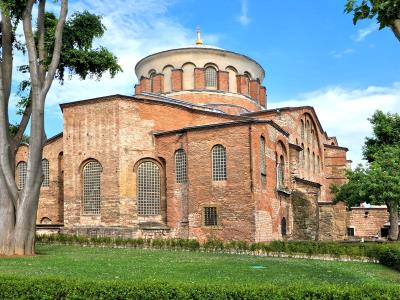

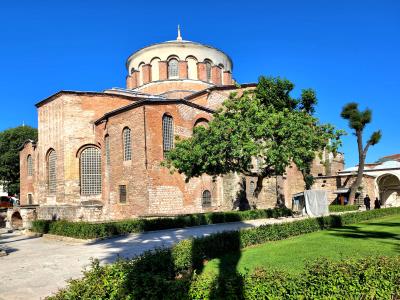
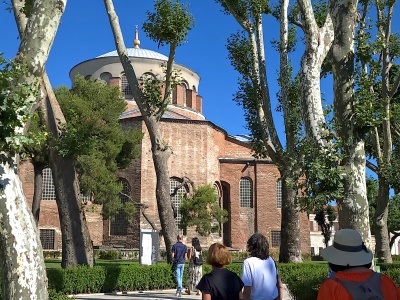
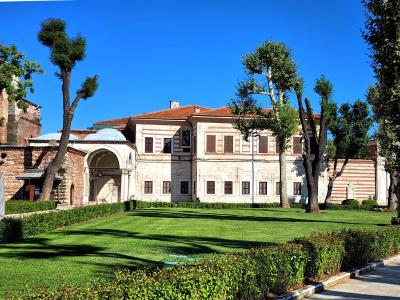
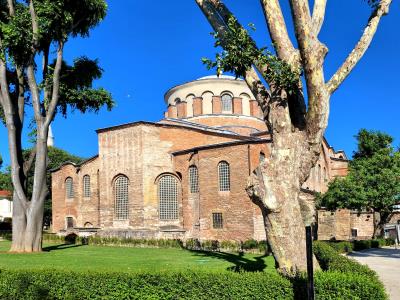
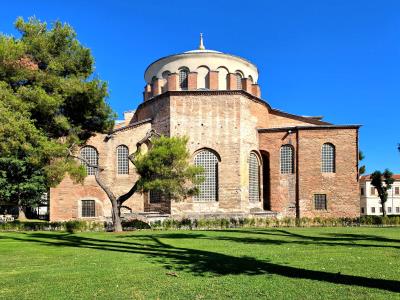
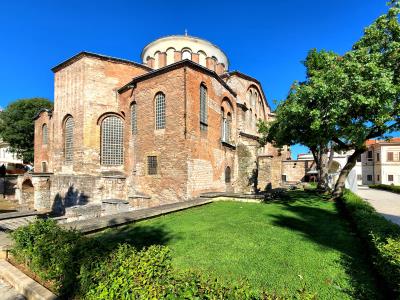
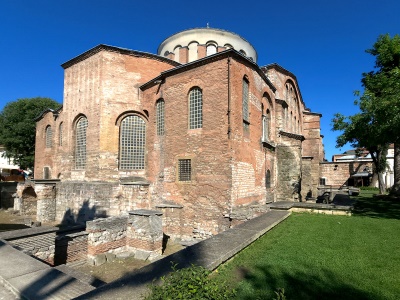
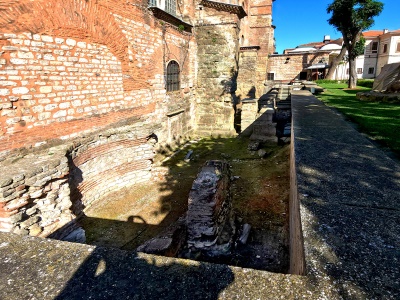
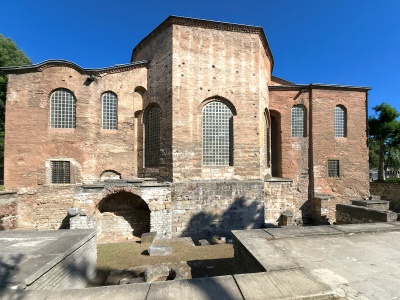
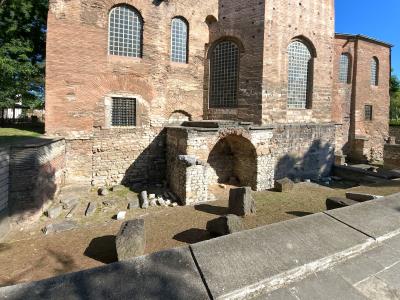
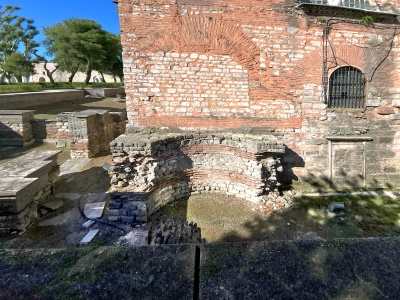
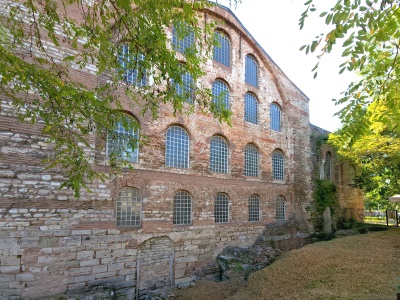
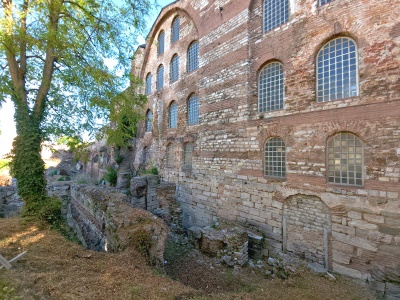
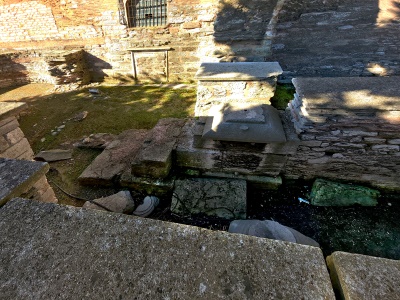
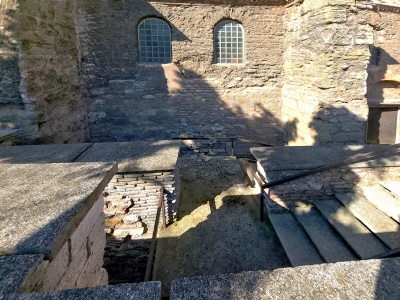
Eyup - Piyer Loti Gondola
The lower station is located on the Golden Horn coast, and the upper is in front of the Pierre Loti Hill cafe area. It is a fast and lovely ride up here on the gondola - less than 2 minutes. Under most of the distance covered by the cable car is the Eyup Sultan Mezarlığı (Cemetery). After riding to the top of the hill, one can, of course, take the cable car back down or walk back down meandering through the cemetery that escalates uphill from the well paved path and cascades downhill from the other side of the steep path.
While walking downhill, I did see a few people making their way up the hill. Definitely not a trip I'd attempt. The hill is very steep and very long. I calculated the distance to be a quarter mile on Google Maps. However, walking down I am certain it was at least 2 or 3 miles and going uphill must be 10 miles or more. The cable line is said to be 1230 feet.
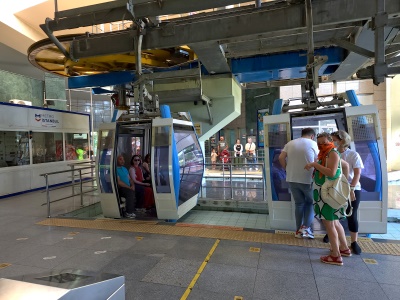
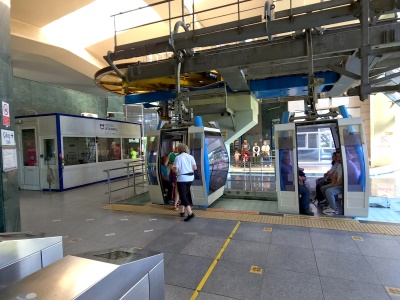
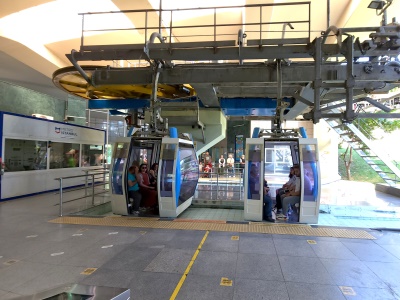
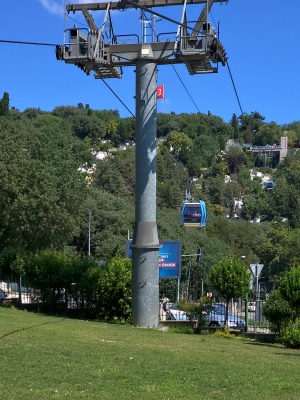
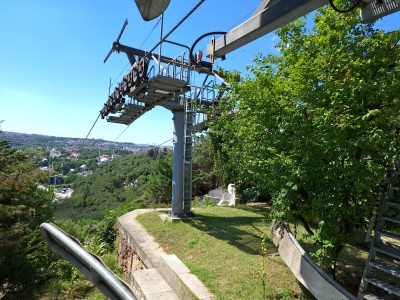
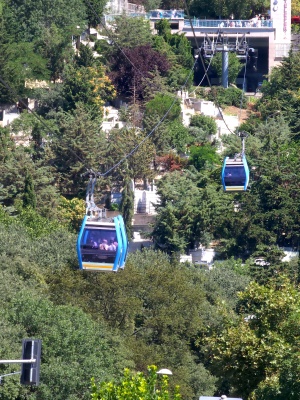
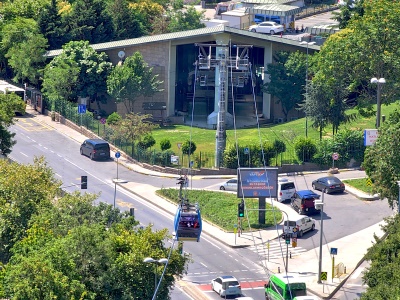
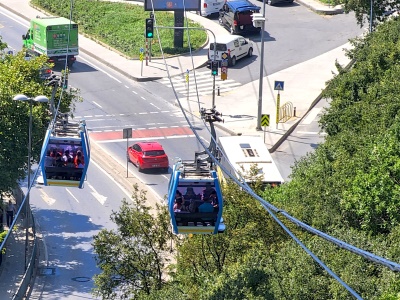
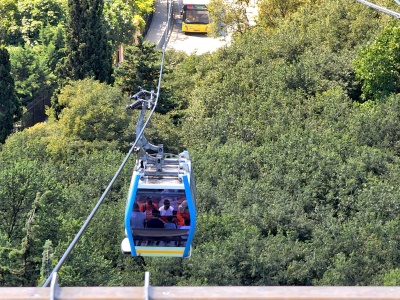
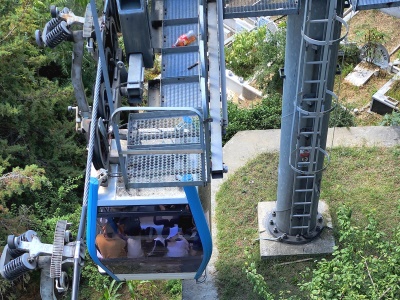
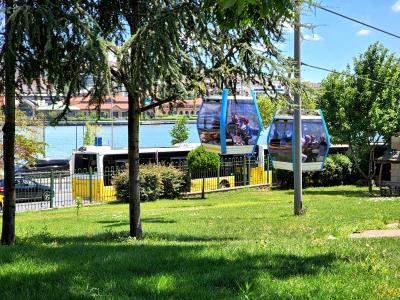
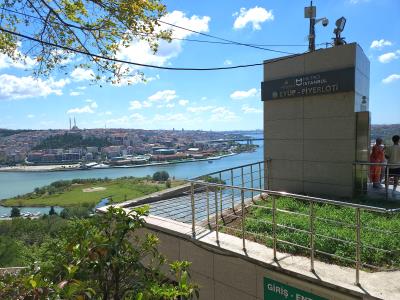
Eyup-Piyer Loti Cable Car ride up Pierre Loti hill and, mostly, over the Eyup cemetery.
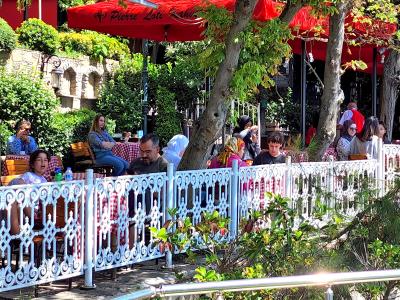
Probably the most nostalgic corner of the city is Pierre Loti Hill. Starting from the 16th century, there were countless numbers of famous tea and coffee houses spreading through the city of Istanbul. But by time, like everything else, the huge number of these houses were abandoned and some of them were even destroyed.
Today, by the cable car station and on the edge of the hill sit a couple of cafes, one above another. and on above are various stalls and businesses catering to the many people who find their way to this area.
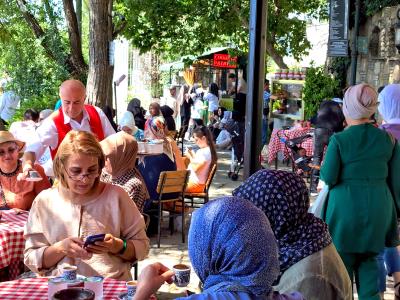
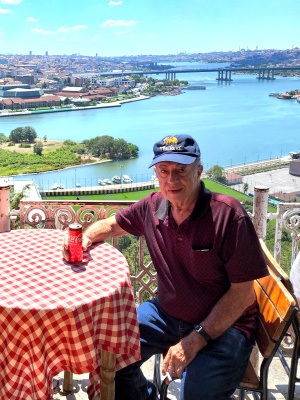
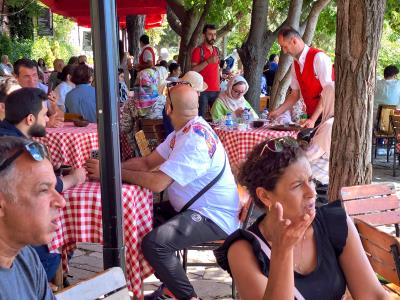
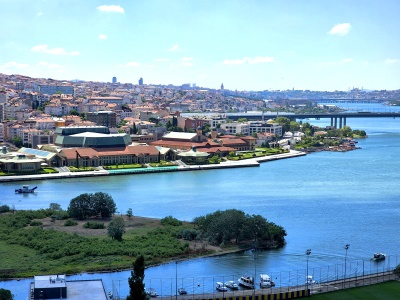
Views of the Golden Horn
Whether taken from the deck beside the upper cable car station or from the cafe, this is an excellent place to get great pictures of the Golden Horn
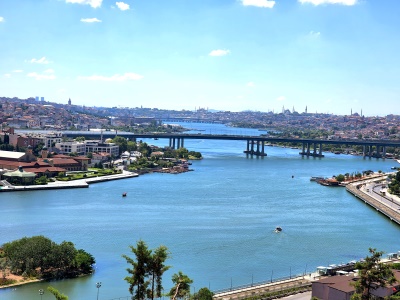
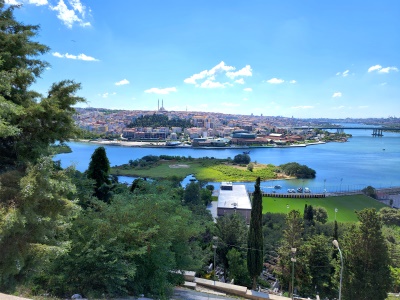
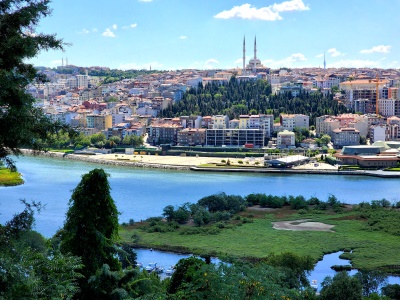
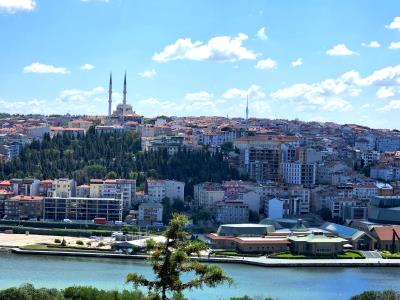
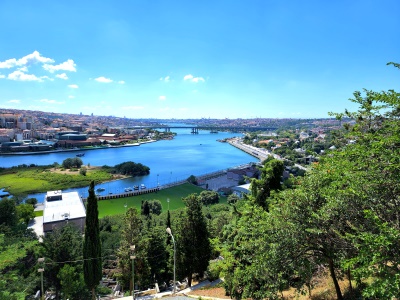
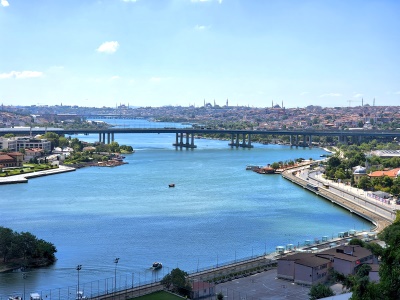
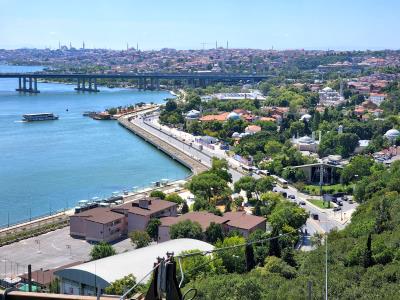
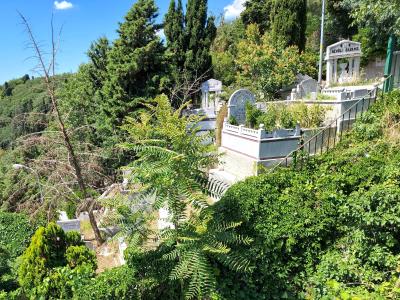
Eyup Sultan Mezarlığı (Cemetery)
This cemetery runs uphill and downhill along the sides of a path / narrow roadway about 1/4 mile long (longer than that if you're walking downhill on it and infinitely longer walking uphill). The roadway is wide enough for small trucks to bring the equipment for new graves and install them. The uphill and downhill from the roadway are far steeper than the roadway itself!
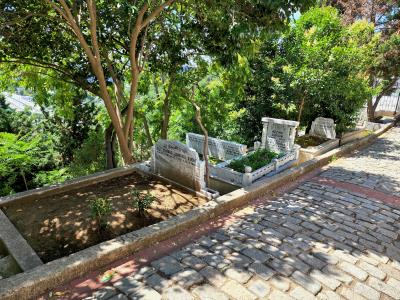
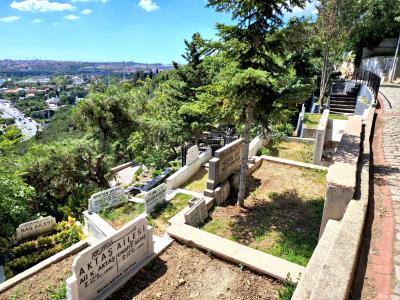
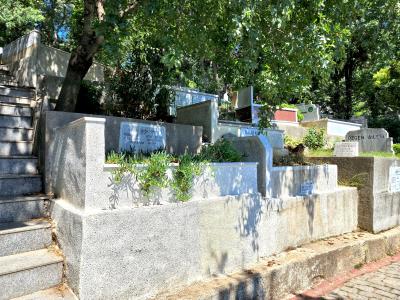
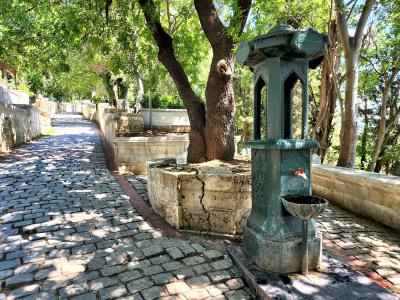
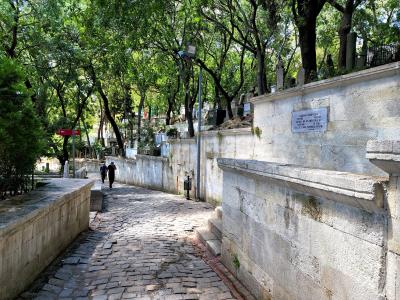
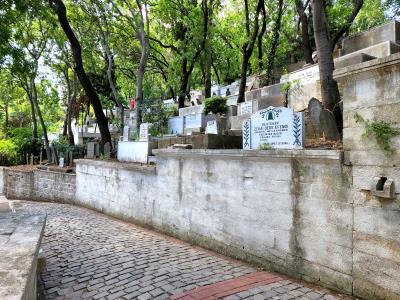
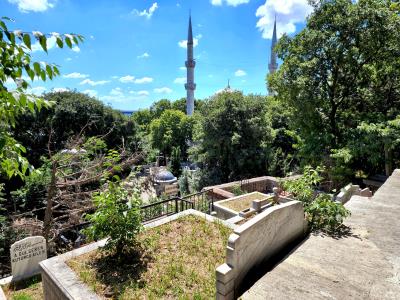
Kanuni Sultan Süleyman Çeşmesi
Suleiman the Magnificent Fountain
Between Eyup Mosque and the Eyup Sultan Cemetery is this double fountain dedicated to Suleiman the Magnificent
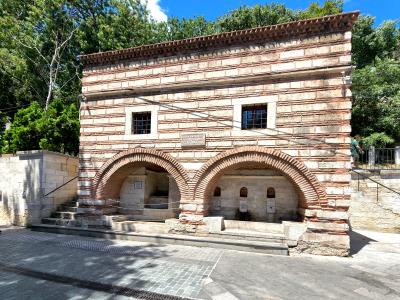
 Eyup Sultan Mosque & Tomb
Eyup Sultan Mosque & Tomb
The Eyüp Sultan Camii (Eyüp Sultan Mosque) is one of the most holy and important mosques in all of Turkey. It is so revered because it located on the site of the tomb of Abu Ayyub al-Ansari (Eyüp Ensari in Turkish) – who was both a friend and standard bearer for the Prophet Muhammed, and was killed during the first Arab siege of Constantinople (674-678).
The mosque was erected on the instruction of Fatih Sultan Mehmet II (aka Mehmet The Conqueror), five years after he seized Constantinople for the Ottomans in 1453. However it fell into disrepair and was further ruined by earthquakes. It was rebuilt using attractive pale honey-colored stone in 1800. The interior is elegant in design and the decorated dome of Eyup Sultan Mosque measures just over 57 feet in diameter and is supported by two half domes.
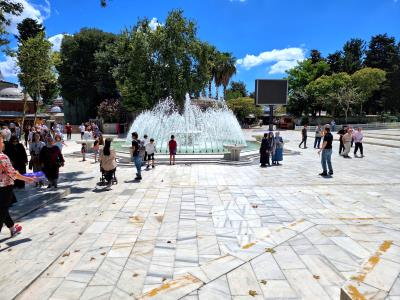
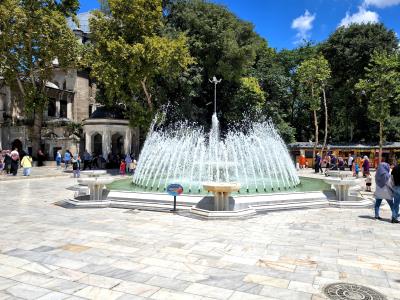
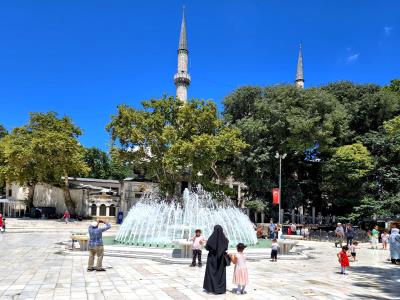
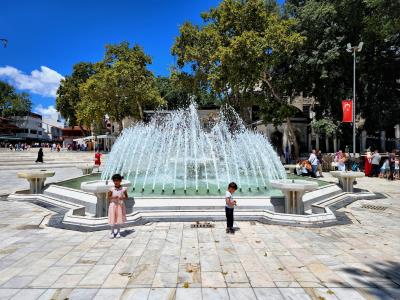
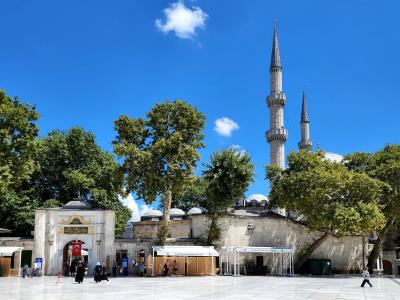
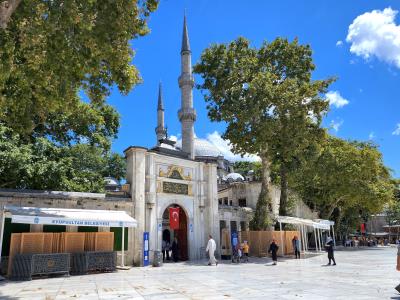
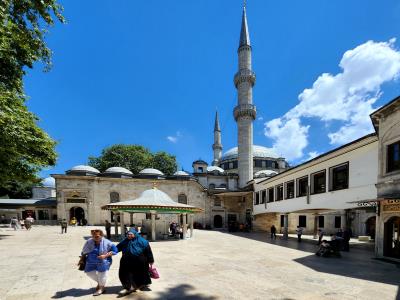
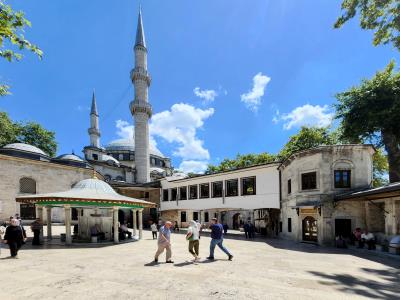
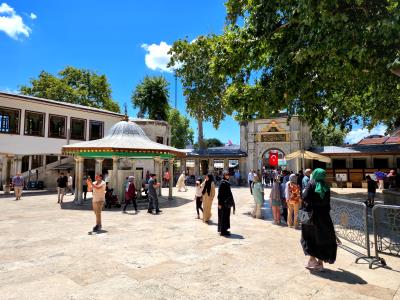
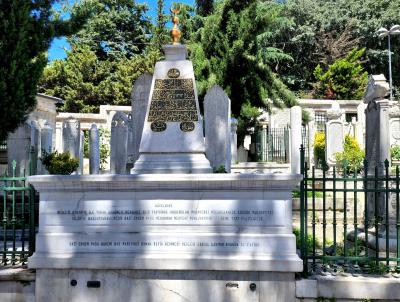
LEFT:
Tomb of Gazi Edhem Pasa -
1844-1909
Gazi Edhem Pasa, the deceased's mausoleum, the year 1327 (AD 1909)
RIGHT:
Portion of cemetery by Eyup Sultan Mosque
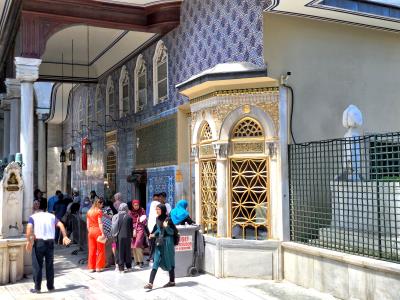
Sultan Ahmet I Sabil
Fountain built in 1613 in the inner courtyard of Eyup Sultan Mosque. the fountain was built by Kizagasi Nustafa Aga and beside the fountain is his tomb (pictured).
